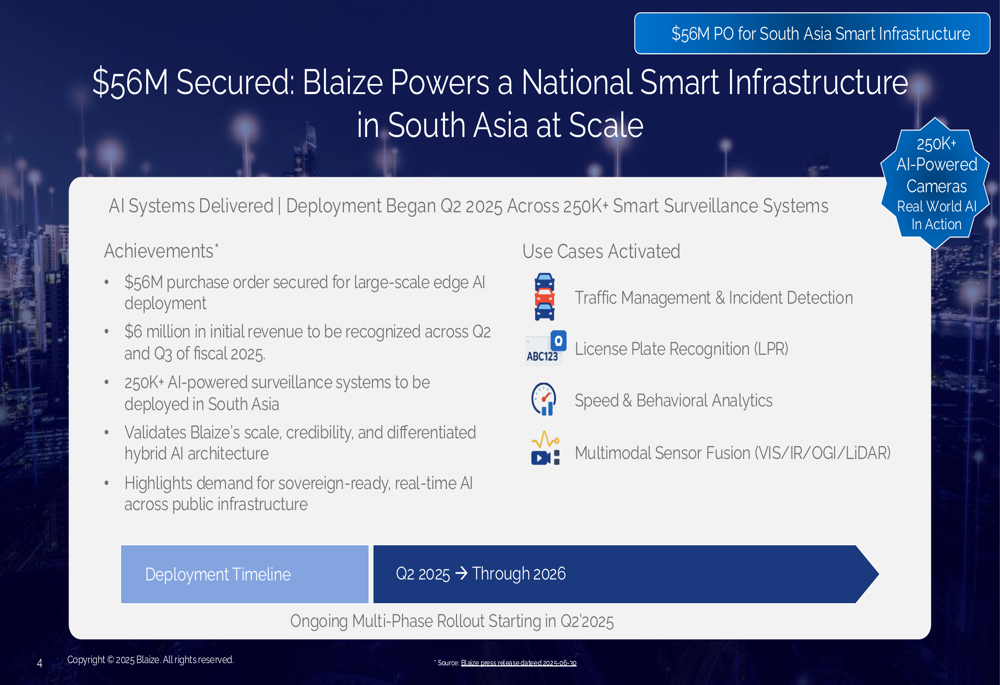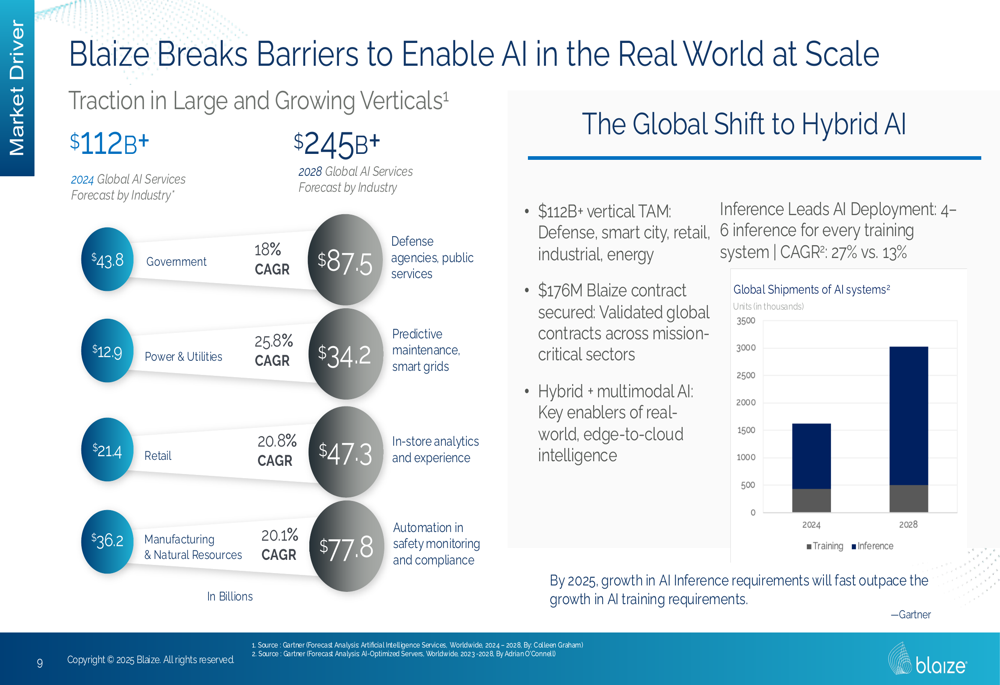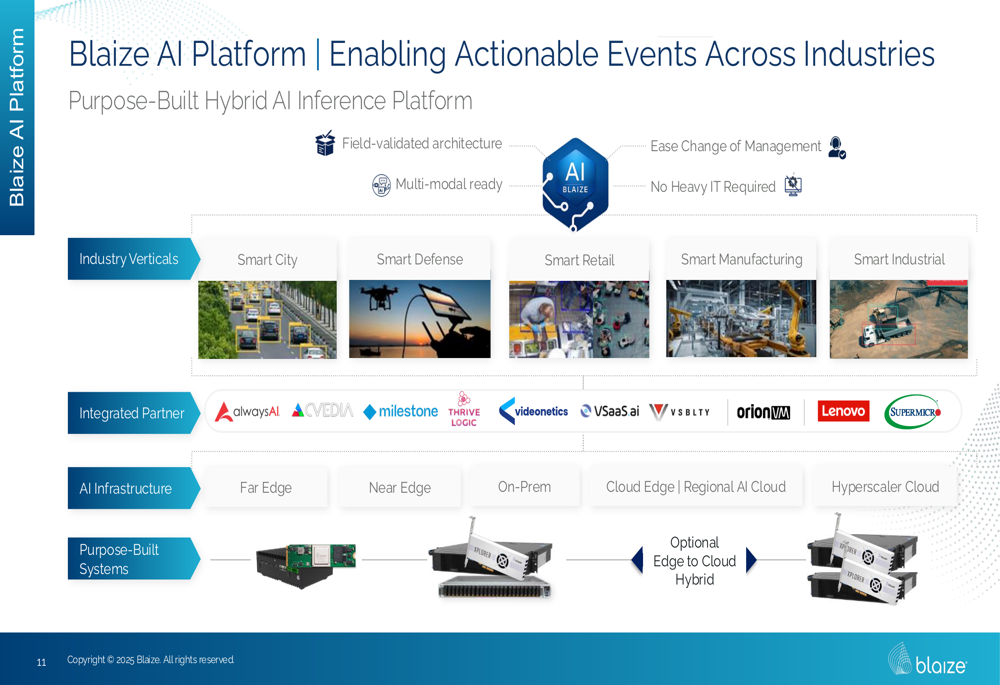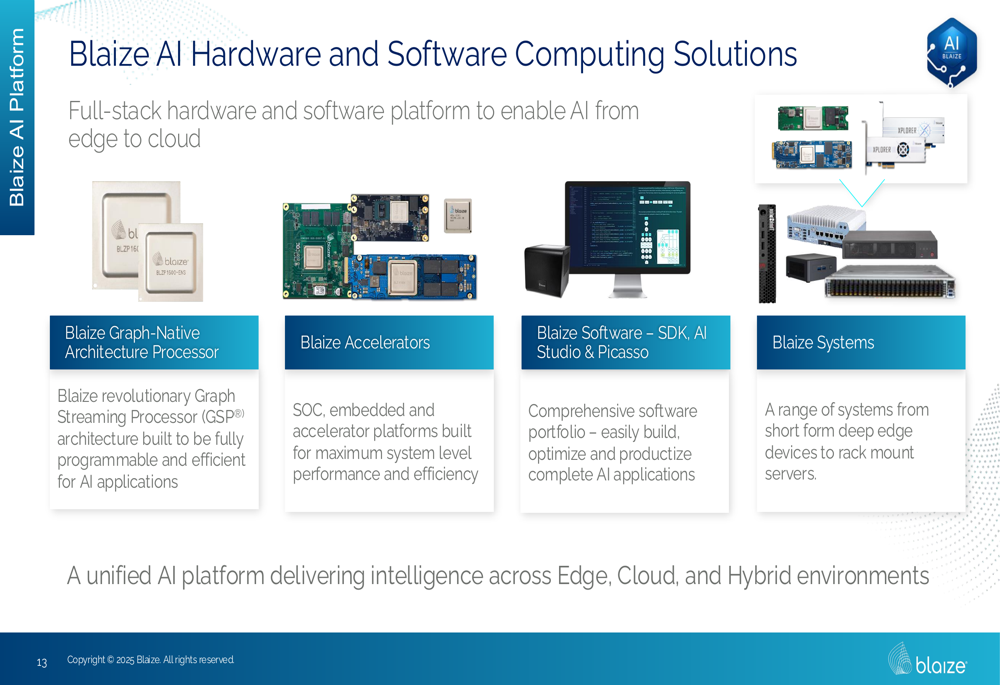Buy tech sell-off, Wedbush’s Ives says: ’this is a 1996 moment, not 1999’
Introduction & Market Context
Blaize Holdings Inc (NASDAQ:BZAI) presented its H1 2025 investor slides on August 14, 2025, highlighting significant contract wins and strategic positioning in the hybrid AI market. The presentation comes as the company’s stock closed at $3.74, showing a modest 1.07% gain during regular trading but declining 1.07% in after-hours trading. The stock has experienced considerable volatility over the past year, trading between $1.70 and $29.61.
The AI chip developer is positioning itself at what it calls an "inflection point" ready to accelerate revenue growth, despite facing substantial financial challenges. Blaize’s recent Q1 2025 earnings revealed a revenue increase to $1 million from $549,000 year-over-year, but also a widening net loss of $147.6 million compared to $16.7 million in the same period last year.
Strategic Initiatives
A central theme of Blaize’s presentation was its recent contract wins, which the company believes will drive meaningful revenue growth over the next 12-24 months. The company highlighted $176 million in newly signed contracts and a pipeline exceeding $725 million in potential opportunities.
As shown in the following slide detailing the company’s H1 2025 highlights, Blaize is targeting a $112 billion total addressable market (TAM) with its hybrid AI and inference solutions:

Two major contracts form the cornerstone of Blaize’s near-term growth strategy. The first is a $56 million purchase order for a national smart infrastructure project in South Asia, involving the deployment of over 250,000 AI-powered surveillance systems. The company expects to recognize initial revenue of $6 million from this contract in Q2 and Q3 of fiscal 2025.
The following slide details this significant infrastructure contract:

The second major deal is a $120 million multi-phase contract with Starshine to deploy hybrid AI platform infrastructure across various industries in Asia. This strategic alliance aims to deliver TCO (Total Cost of Ownership) advantages through Blaize’s hybrid computing approach combining its Graph Streaming Processor (GSP) with GPUs.
This partnership is illustrated in the following slide showing the regional expansion strategy:

Quarterly Performance Highlights
While Blaize’s presentation emphasized future growth potential, its current financial reality presents significant challenges. The company’s Q1 2025 earnings showed revenue of $1 million, up from $549,000 in Q1 2024, but still modest compared to its contract announcements. More concerning is the substantial net loss of $147.6 million, compared to $16.7 million in the same quarter last year.
The company’s cash position stood at $45 million as of the end of Q1, down from $50.2 million at the end of 2024, with $13.1 million used for operations during the quarter. This burn rate raises questions about the company’s runway despite management’s assertion that it has extended its cash runway to the first half of 2026.
For Q2 2025, Blaize projects revenue between $1.5 million and $1.7 million, with full-year 2025 revenue guidance ranging from $19 million to $50 million. While this represents significant growth from current levels, it’s notably lower than the contract values highlighted in the presentation, suggesting a gradual revenue recognition timeline.
Competitive Industry Position
Blaize is targeting what it identifies as a $112 billion market opportunity across defense, smart city, retail, industrial, and energy sectors. The company’s market positioning is illustrated in the following slide showing the scale of the AI inference market compared to the training market:

Central to Blaize’s competitive strategy is its hybrid AI approach, which the company claims delivers 2-3x better performance than traditional GPU-only solutions. This differentiation is based on Blaize’s Graph Streaming Processor (GSP) architecture, which is designed for efficient AI inference at the edge.
The company’s product portfolio spans hardware and software solutions designed to enable AI applications across various industries, as shown in the following comprehensive platform overview:

Blaize’s hardware offerings include processors, accelerators, and complete systems designed for AI workloads, as detailed in this product lineup:

The company emphasizes its full-stack approach, providing not just chips but complete hardware and software solutions for AI deployment:

Forward-Looking Statements
Blaize expects revenue acceleration through 2025 and into 2026, driven by its dual go-to-market strategy and global expansion. The company anticipates EBITDA improvements each quarter as it scales, though the timeline to profitability remains unclear given the current substantial losses.
CEO Dinakar Munagala emphasized the company’s commitment to delivering "real-time deep inference for physical environments," highlighting Blaize’s focus on enabling intelligence where it is needed most. However, the company faces several challenges, including:
1. Supply chain issues potentially impacted by tariffs
2. Continued significant net losses affecting investor confidence
3. Intense competition in the AI chip market from established players with larger resources
4. Operational challenges in managing global expansion
5. The need to continually innovate in AI chip technology
The disconnect between Blaize’s ambitious contract announcements ($176 million) and its modest revenue guidance ($19-50 million for 2025) suggests a lengthy revenue recognition timeline and execution risks. Investors will likely watch closely for evidence that the company can successfully convert its contract pipeline into sustainable revenue growth while managing its cash burn rate.
Full presentation:
This article was generated with the support of AI and reviewed by an editor. For more information see our T&C.
